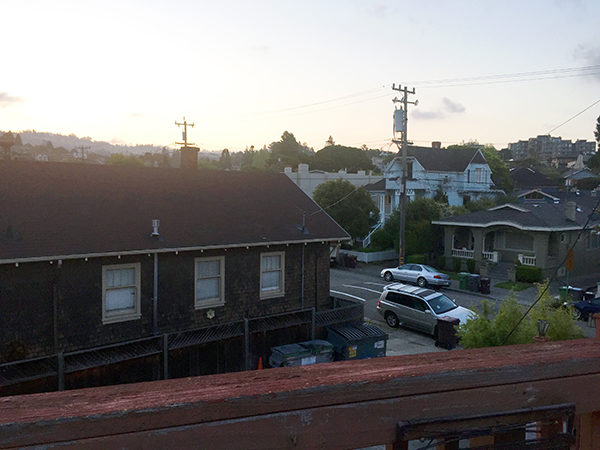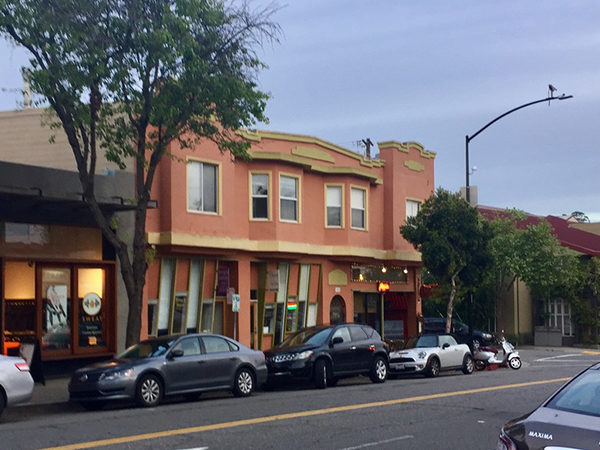Since I moved to the San Francisco Bay Area, I’ve lived in two neighborhoods. My first home was a triplex in the Richmond district, a bustling place with a plethora of cultures (sometimes dubbed “New Chinatown”), housing types, and activities. More recently, I’ve called a two-bedroom unit above shops in Oakland’s Rockridge neighborhood home. In both places, the walkability and unique-yet-varied character has made life exciting. I simply can’t be anonymous—and I certainly don’t feel isolated—as I interact with my neighbors daily.
While the Richmond was my first home in the Bay, I’ve grown to love Rockridge, which is steeped in history and character. Interestingly, the historic neighborhood, one of many in Oakland, featured two rail lines running through it into the late fifties, which means it was originally designed and built to be connected and walkable. Culturally, this area developed the “Little Italy” moniker because it housed a large population of Italian immigrants drawn to the work opportunities at the nearby quarry.

The best part about my building is that it is a piece of a dynamic neighborhood defined by Missing Middle Housing. My unit faces the Main Street, but looking out the back window, I can see a rich variety of duplexes and multiplexes, intermingled with single-family homes, that house the people nearby to keep the Main Street alive. During my five-minute walk to the grocery store, I walk past a plethora of housing types; everything from single-family cottages to multiplexes to apartments-over-shops are present. And, of course, within these buildings are a rich variety of people: daily I see students from the nearby art academy, young professional couples with children, and elderly friends communing at local neighborhood haunts.
As part of a mixed-use building, my apartment quite literally sits atop the hustle and bustle of the neighborhood Main Street, which connects to the surrounding neighborhood with a network of intimate, tree-lined streets. The architectural detailing of the Main Street’s two- and three-story facades melds seamlessly into the nearby historic homes.
Downstairs, the first floor houses an Italian restaurant with outdoor seating and all-you-can-drink wine, a nail and massage salon, and two hair salons (one miniature, one full-size), all catering to the variety of needs of the neighborhood (and all within walking distance!).
The domestic portion of my building has a lot of character and diversity. There are traces of transformations over the years—a bedroom addition, a separation of one unit into two—and the types of units in the building allow for a variety of incomes and a degree of flexibility. When my now-neighbor decided to downsize from my current two-bedroom to live in a studio apartment, he only had to move across the hall.

Since my neighbors and I are busy going about our lives, our neighborly interactions can be brief, but we can always call on each other in times of need. The young couple across the hall comes to check in when the fuses are blown. The nail salon downstairs will hold packages for all the residents when delivered during the day, leaving a note for us to pick it up on the weekend. On the weekends, the main hallway becomes an impromptu playroom for my neighbor’s visiting children. In the summer, we leave the door open to our own private balcony, where we grow herbs and are often visited by the next-door neighbor’s cat.
From my bedroom window, I can look out across the street in the morning to the coffee shop locals walk to—some even still in their pajamas—ready to discuss the latest neighborhood news. I can see through the shopfront window how long the line is, so I can perfectly time my morning coffee run. The owner and baristas have seen me exit the gate of my building so many times that they’re often ready with a familiar “hello” and my regular small, black coffee with lemon scone when I walk in the door.
Since moving to the Bay Area three years ago, I can say that the two neighborhoods I’ve lived in—both defined by Missing Middle Housing, character, and walkability—have been essential to making me feel connected. From my Rockridge apartment, I can walk to my friend renting his first studio apartment and visit my cousin who recently settled down with her teenage children—both are within a short jaunt.
In a sense, the Missing Middle isn’t so “missing” to me—I’ve found my home in it.